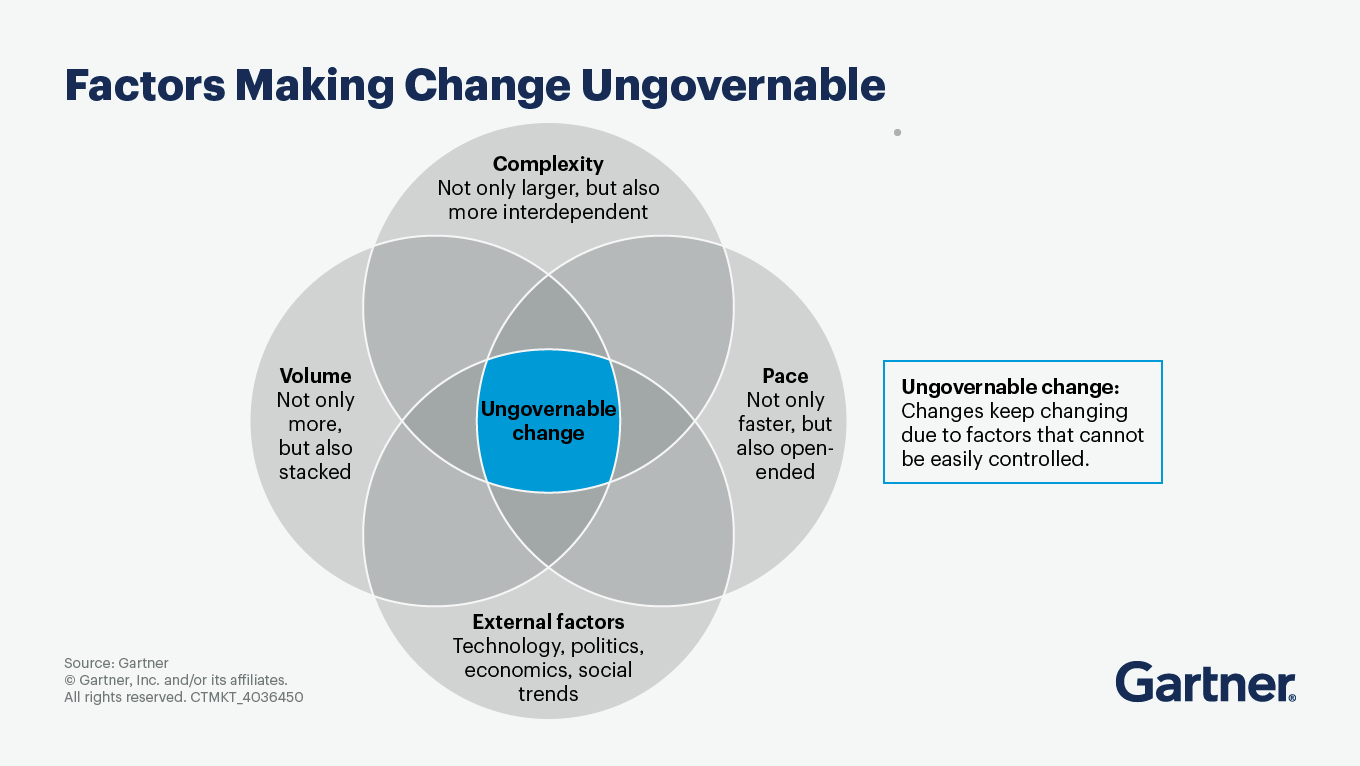Empower your teams to make change intuitive and a normal part of everyday work.
- Gartner client? Log in for personalized search results.
Inspiring change isn’t the answer
Change is constant, complex and often beyond leadership control. And most employees don’t trust organizational change, feeling skeptical about both past decisions and future initiatives. Gartner finds that only 32% of leaders globally actually get employees to adopt changes in a healthy way.
That’s because leaders try to inspire change adoption, and that approach falls flat in a low-change-trust environment. Establishing change as a routine is three times more effective than the inspirational approach, and HR plays a key role in helping leaders develop the skills needed to make that shift, which is why routinizing change is a top priority for CHROs heading into 2026.
Navigate change by making it part of the routine
Routinizing change means helping employees see change as normal, regulating discomfort and building intuitive responses to new situations. When organizations succeed in embedding this approach, the impact goes beyond employee well-being.
Companies with above-average change adoption see year-over-year revenue growth rates that are two times higher than those that are below average. That’s why it’s essential for CHROs and other HR leaders to help managers routinize change. Here are three ways to do it.
Clarify leaders’ role in change
Most leaders try to communicate change by emphasizing a future vision and what the organization will look like when change is complete. Instead, HR must help leaders focus on the now and guide employees toward making steady progress throughout the change process. While leaders may worry that this approach adds to their workload — especially when change is constant — HR can show that prioritizing regular progress doesn’t require leaders to do more.
It’s about using existing skills in new ways, redistributing time and working more sustainably. By realigning cultural strategies to value progress, CHROs can help leaders reset expectations and rethink their roles within change management.
Equip leaders with emotional regulation tools
Change can be uncomfortable for both employees and leaders, which is why it’s sometimes met with resistance. HR can make change easier by helping leaders manage employee emotions and their own when it comes to change, confronting the root cause of these feelings and giving them the tools they need to become comfortable with the discomfort. HR’s expertise in change management puts them in a unique position to be able to effectively support leaders with the right tools and resources.
Leaders are best positioned to use these tools to help their employees cope with change. However, when employee frustration with change is valid, CHROs can help by empowering leaders to escalate these concerns.
Teach leaders to build “change reflexes”
HR should help leaders teach employees to build change reflexes — core skills that become second nature through regular practice. This starts by figuring out which change skills matter most using recent initiatives. The best way to build these reflexes is through small, everyday tasks that mirror the bigger changes.
To help employees stay engaged, HR can equip leaders with resources and messaging that show the risks of not adapting quickly enough to change. CHROs can also support teams by helping identify skill gaps and giving leaders practical tools to close them.
FAQs on adopting change
Why do employees struggle to adapt to change at work?
Change can be scary, and many employees find change uncomfortable because it happens often. They may not trust that changes will be good for them or the organization.
What is a “change reflex” and why is it important?
A change reflex is a core skill that is applicable to multiple change scenarios, practiced with enough repetition to become intuitive.
How can employees get better at dealing with change?
Employees can improve by practicing change skills in small, everyday tasks and focusing on progress, not just the end goal.
Attend a Conference
Join Gartner experts and your peers to accelerate growth
Gather alongside your peers in Orlando to gain insight on emerging trends, receive one-on-one guidance from a Gartner expert and create a strategy to tackle your priorities head-on.
Gartner HR Symposium/Xpo™
Orlando, FL

Drive stronger performance on your mission-critical priorities.
